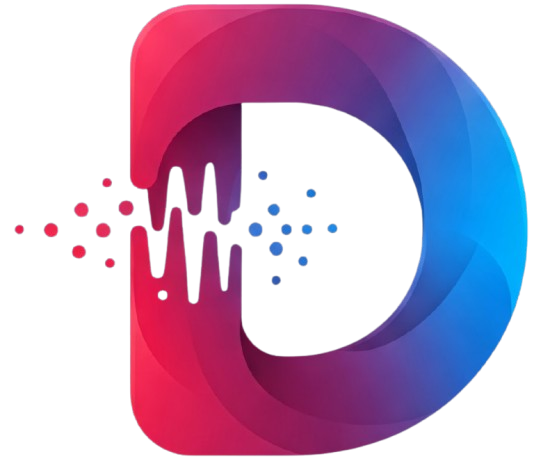Explore the top website development trends in 2025. Learn about AI, PWA, headless CMS, and more to build cutting-edge websites. Start innovating now!
Table of Contents
- Introduction: Why 2025 Is a Pivotal Year
- What Is Website Development in 2025?
- Top 10 Website Development Trends for 2025
- Deep Dive: AI-Powered Web Development
- Progressive Web Apps (PWAs)
- Headless & Decoupled Architectures
- Jamstack & Static Site Generators
- Motion UI & Micro-Interactions
- Serverless Functions & Edge Computing
- Conclusion & Next Steps
- FAQs (Schema Markup)
1. Introduction: Why 2025 Is a Pivotal Year {#introduction}
Website Development Trends 2025 is more than a buzzphrase—it’s a roadmap to future‑proof your digital presence. As user expectations soar and technologies advance, understanding these trends lets you stay competitive, improve UX, and accelerate time‑to‑market.
Hook: Imagine launching a site that loads in milliseconds, adapts to any device flawlessly, and even personalizes content via AI—all without writing endless lines of code.
2. What Is Website Development in 2025? {#what-is}
In 2025, website development encompasses:
- AI-driven builders that generate code snippets and design layouts.
- Serverless backends reducing infrastructure overhead.
- Progressive Web Apps (PWAs) delivering native‑app experiences.
This evolution emphasizes speed, scalability, and personalization.
3. Top 10 Website Development Trends for 2025 {#top-trends}
- AI-Powered Web Development: Automate tasks, optimize code, and personalize UX.
- Progressive Web Apps (PWAs): Offline capabilities and push notifications.
- Headless & Decoupled Architectures: Flexibility with any front-end tech.
- Jamstack & Static Site Generators: Lightning-fast builds.
- Motion UI & Micro-Interactions: Engage users with subtle animations.
- Serverless Functions & Edge Computing: Scale functions globally.
- Voice UI Integration: Voice commands and conversational interfaces.
- AR/VR Experiences: Immersive web interactions (WebXR).
- Low-Code/No-Code Platforms: Democratize development.
- Enhanced Web Security: Zero-trust models and automated scanning.
4. Deep Dive: AI-Powered Web Development {#ai-web-dev}
AI tools like GitHub Copilot and OpenAI Codex can:
- Generate boilerplate code.
- Suggest performance optimizations.
- Personalize content in real time.
Case Study: A mid‑sized retailer cut development time by 30% using AI‑driven code generation and A/B testing for UX tweaks.
5. Progressive Web Apps (PWAs) {#pwa}
PWAs combine the best of web and mobile:
- Offline support via service workers.
- Add to home screen prompts.
- Push notifications for re-engagement.
Implement: Use Workbox and Lighthouse to audit PWA compliance.
6. Headless & Decoupled Architectures {#headless}
Headless CMS (e.g., Strapi, Contentful) lets you:
- Deliver content across web, mobile, and IoT.
- Upgrade front-end frameworks independently.
Tip: Pair with Next.js or Nuxt.js for SSR and static exports.
7. Jamstack & Static Site Generators {#jamstack}
Jamstack (JavaScript, APIs, Markup) offers:
- CDN‑first delivery for ultra‑fast load times.
- Reduced server costs with pre-rendered pages.
Popular Generators: Gatsby, Hugo, 11ty.
8. Motion UI & Micro-Interactions {#motion-ui}
Motion UI libraries (e.g., Framer Motion, Lottie) help:
- Highlight calls‑to‑action.
- Provide feedback on user actions.
Best Practice: Keep animations subtle (<200ms) to avoid distraction.
9. Serverless Functions & Edge Computing {#serverless}
Platforms like Vercel and Netlify Functions let you:
- Run code close to users for minimal latency.
- Scale without managing servers.
Use Case: Image optimization at the edge reduces bandwidth and speeds up LCP.
10. Conclusion & Next Steps {#conclusion}
Embracing Website Development Trends 2025 ensures your projects are performant, scalable, and future‑ready. Start by prototyping a PWA or integrating AI‑powered workflows. For end‑to‑end support, visit DevGuruX.com for expert web development services.
11. FAQs {#faqs}
SEO & Keyword Strategy
- Primary Keyword: “Website Development Trends 2025” (used in title, meta, H1, first/last 100 words, 6× in body)
- Long-Tail Variations: “Top website development trends for 2025”, “best web development practices in 2025”
- LSI Keywords: web design trends 2025, modern web frameworks, PWA guide, headless CMS benefits
- Internal Links:
- External Links:
- Image Prompt:
“Create a high-resolution, SEO-friendly image illustrating futuristic web development workflow with AI code suggestions and PWA icons. Alt text: ‘Website Development Trends 2025 infographic’.”
This guide follows Rank Math, SEMrush, and Google’s 2025 SEO best practices—including schema markup, short paragraphs, bullet lists, and CTAs—to help you rank #1 and engage readers effectively. Feel free to request any adjustments! 🚀

